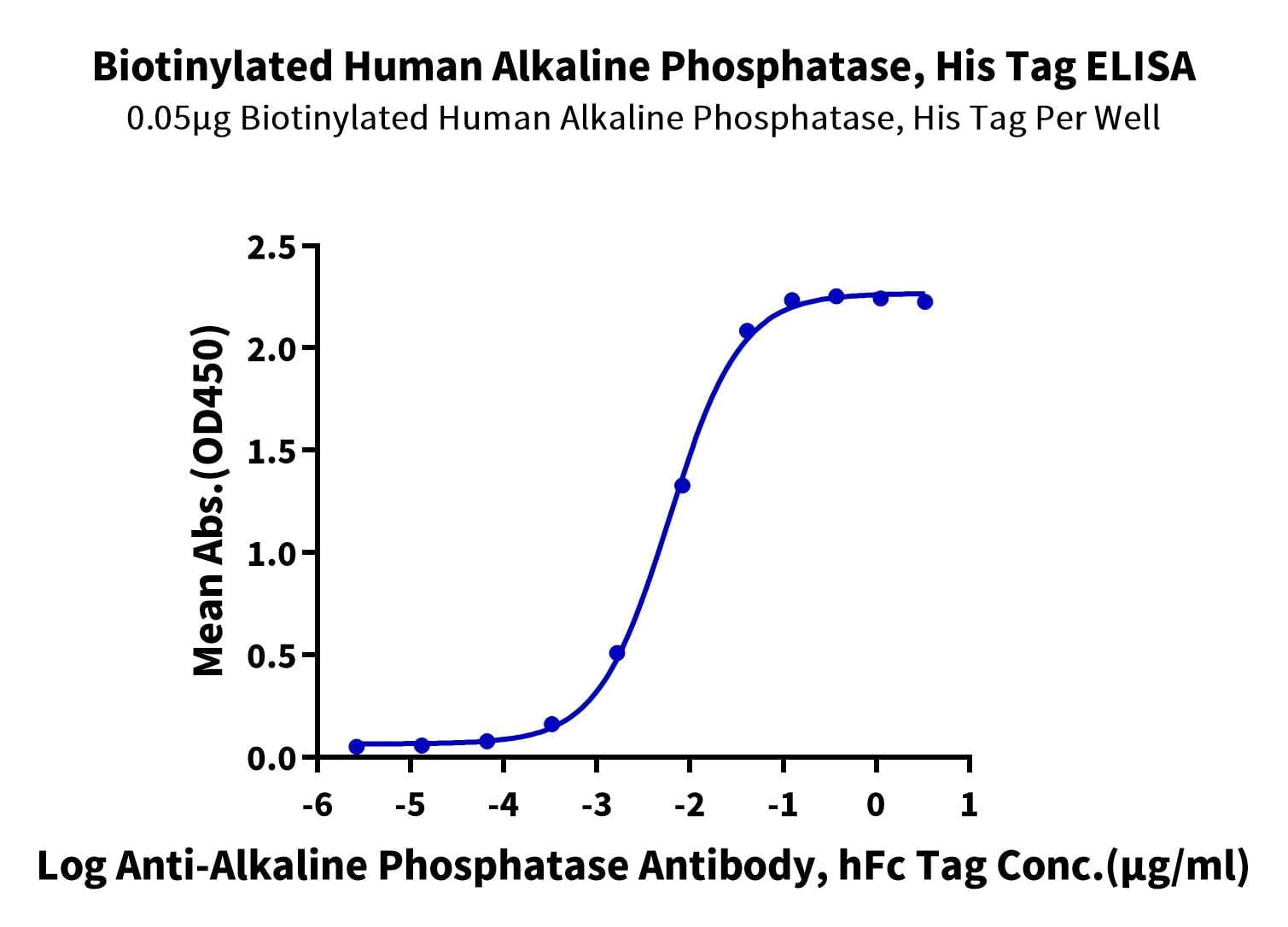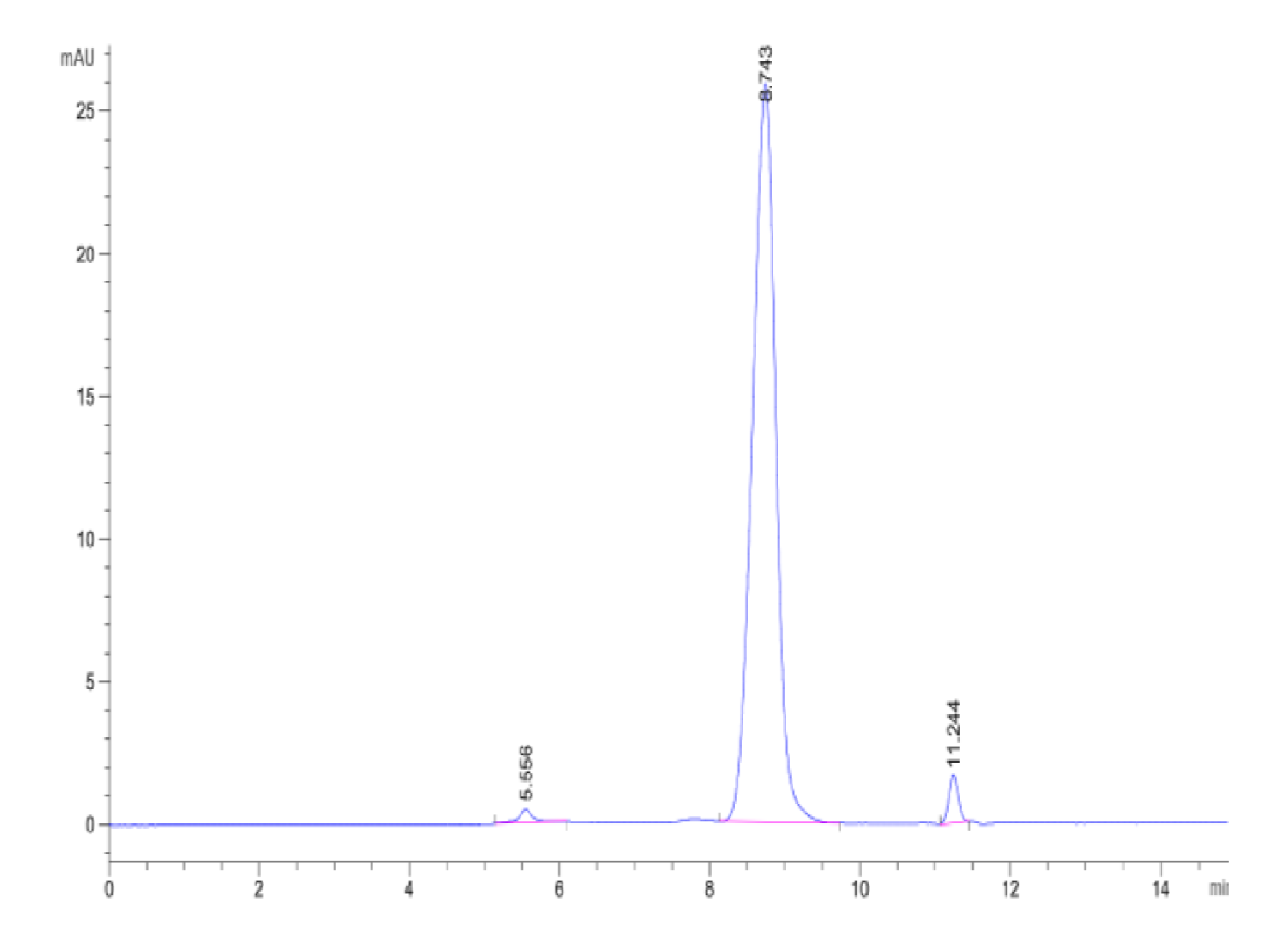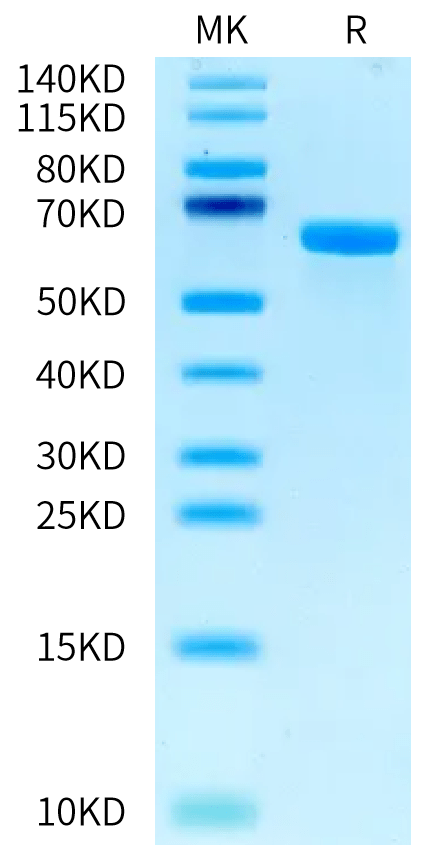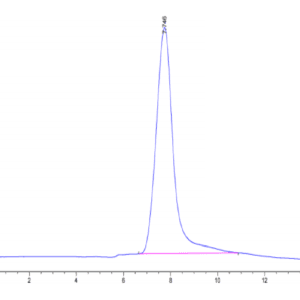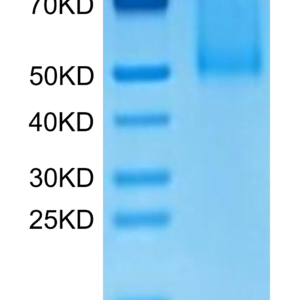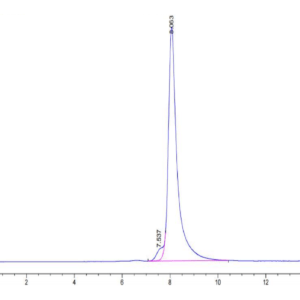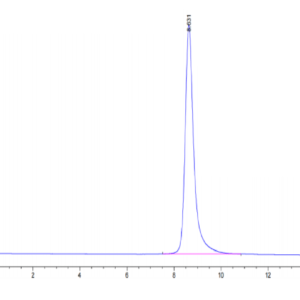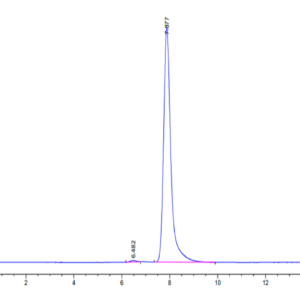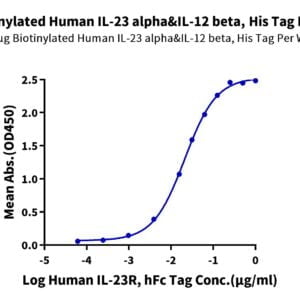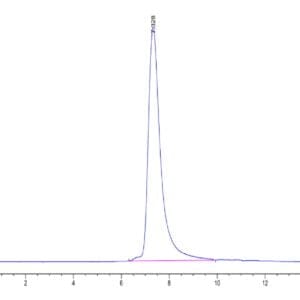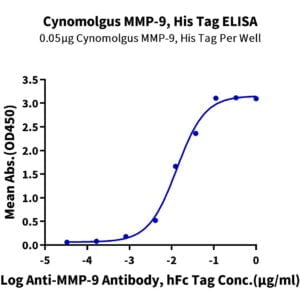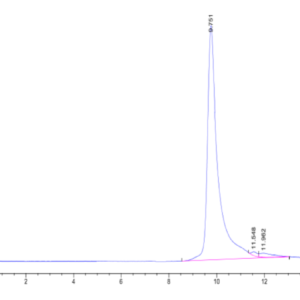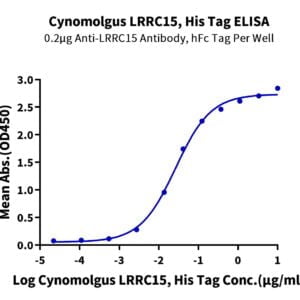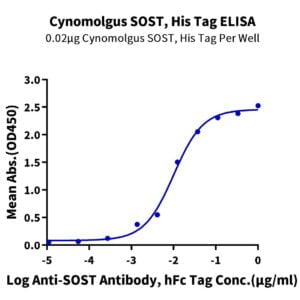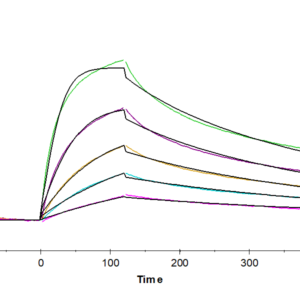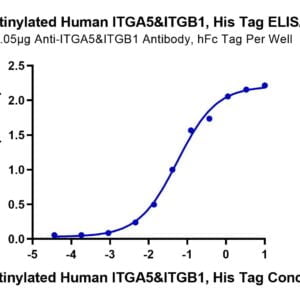| Weight | 1 lbs |
|---|---|
| Dimensions | 9 × 5 × 2 in |
| express system | HEK293 |
| product tag | C-His |
| purity | > 95% as determined by Tris-Bis PAGE;> 95% as determined by HPLC |
| background | Alkaline phosphatase can be considered "our favorite enzyme" for reasons apparent to those who diagnose and treat metabolic bone diseases or who study skeletal biology. Few might know, however, that alkaline phosphatase likely represents the most frequently assayed enzyme in all of medicine. Elevated activity in the circulation is universally recognized as a marker for skeletal or hepatobiliary disease. |
| molecular weight | The protein has a predicted MW of 53.8 kDa. Due to glycosylation, the protein migrates to 55-70 kDa based on Tris-Bis PAGE result. |
| available size | 100 µg, 500 µg |
| endotoxin | Less than 1EU per μg by the LAL method. |
Biotinylated Human Alkaline Phosphatase (Placental type) /ALPP Protein (Primary Amine Labeling) 2179
$525.00 – $1,750.00
Summary
- Expression: HEK293
- Functional: Yes (ELISA)
- Amino Acid Range: Ile23-Asp506
Biotinylated Human Alkaline Phosphatase (Placental type) /ALPP Protein (Primary Amine Labeling) 2179
| protein |
|---|
| Size and concentration 100, 500µg and lyophilized |
| Form Lyophilized |
| Storage Instructions Valid for 12 months from date of receipt when stored at -80°C. Recommend to aliquot the protein into smaller quantities for optimal storage. Please minimize freeze-thaw cycles. |
| Storage buffer Shipped at ambient temperature. |
| Purity > 95% as determined by Tris-Bis PAGE |
| target relevance |
|---|
| Alkaline phosphatase can be considered "our favorite enzyme" for reasons apparent to those who diagnose and treat metabolic bone diseases or who study skeletal biology. Few might know, however, that alkaline phosphatase likely represents the most frequently assayed enzyme in all of medicine. Elevated activity in the circulation is universally recognized as a marker for skeletal or hepatobiliary disease. |
| Protein names Alkaline phosphatase, placental type (EC 3.1.3.1) (Alkaline phosphatase Regan isozyme) (Placental alkaline phosphatase 1) (PLAP-1) |
| Gene names ALPP,ALPP PLAP |
| Protein family Alkaline phosphatase family |
| Mass 9606Da |
| Function Alkaline phosphatase that can hydrolyze various phosphate compounds. |
| Catalytic activity BINDING 64; /ligand="Mg(2+)"; /ligand_id="ChEBI:CHEBI:18420"; /evidence="ECO:0000269|PubMed:11124260, ECO:0000269|PubMed:15946677, ECO:0000269|PubMed:16815919, ECO:0000269|PubMed:20693656"; BINDING 64; /ligand="Zn(2+)"; /ligand_id="ChEBI:CHEBI:29105"; /ligand_label="1"; /evidence="ECO:0000269|PubMed:11124260, ECO:0000269|PubMed:15946677, ECO:0000269|PubMed:16815919, ECO:0000269|PubMed:20693656"; BINDING 114; /ligand="Zn(2+)"; /ligand_id="ChEBI:CHEBI:29105"; /ligand_label="1"; /evidence="ECO:0000269|PubMed:11124260, ECO:0000269|PubMed:15946677, ECO:0000269|PubMed:16815919, ECO:0000269|PubMed:20693656"; BINDING 177; /ligand="Mg(2+)"; /ligand_id="ChEBI:CHEBI:18420"; /evidence="ECO:0000269|PubMed:11124260, ECO:0000269|PubMed:15946677, ECO:0000269|PubMed:16815919, ECO:0000269|PubMed:20693656"; BINDING 238; /ligand="Ca(2+)"; /ligand_id="ChEBI:CHEBI:29108"; /evidence="ECO:0000250|UniProtKB:P05186"; BINDING 291; /ligand="Ca(2+)"; /ligand_id="ChEBI:CHEBI:29108"; /evidence="ECO:0000250|UniProtKB:P05186"; BINDING 292; /ligand="Ca(2+)"; /ligand_id="ChEBI:CHEBI:29108"; /evidence="ECO:0000250|UniProtKB:P05186"; BINDING 307; /ligand="Ca(2+)"; /ligand_id="ChEBI:CHEBI:29108"; /evidence="ECO:0000250|UniProtKB:P05186"; BINDING 333; /ligand="Mg(2+)"; /ligand_id="ChEBI:CHEBI:18420"; /evidence="ECO:0000269|PubMed:11124260, ECO:0000269|PubMed:15946677, ECO:0000269|PubMed:16815919, ECO:0000269|PubMed:20693656"; BINDING 338; /ligand="Zn(2+)"; /ligand_id="ChEBI:CHEBI:29105"; /ligand_label="2"; /evidence="ECO:0000269|PubMed:11124260, ECO:0000269|PubMed:15946677, ECO:0000269|PubMed:16815919, ECO:0000269|PubMed:20693656"; BINDING 342; /ligand="Zn(2+)"; /ligand_id="ChEBI:CHEBI:29105"; /ligand_label="2"; /evidence="ECO:0000269|PubMed:11124260, ECO:0000269|PubMed:15946677, ECO:0000269|PubMed:16815919, ECO:0000269|PubMed:20693656"; BINDING 379; /ligand="Zn(2+)"; /ligand_id="ChEBI:CHEBI:29105"; /ligand_label="1"; /evidence="ECO:0000269|PubMed:11124260, ECO:0000269|PubMed:15946677, ECO:0000269|PubMed:16815919, ECO:0000269|PubMed:20693656"; BINDING 380; /ligand="Zn(2+)"; /ligand_id="ChEBI:CHEBI:29105"; /ligand_label="1"; /evidence="ECO:0000269|PubMed:11124260, ECO:0000269|PubMed:15946677, ECO:0000269|PubMed:16815919, ECO:0000269|PubMed:20693656"; BINDING 454; /ligand="Zn(2+)"; /ligand_id="ChEBI:CHEBI:29105"; /ligand_label="2"; /evidence="ECO:0000269|PubMed:11124260, ECO:0000269|PubMed:15946677, ECO:0000269|PubMed:16815919, ECO:0000269|PubMed:20693656" |
| Subellular location Cell membrane; Lipid-anchor, GPI-anchor . |
| Tissues Detected in placenta (at protein level). |
| Structure Homodimer. |
| Target Relevance information above includes information from UniProt accession: P05187 |
| The UniProt Consortium |
Data
Publications
Publications
| pmid | title | authors | citation |
|---|---|---|---|
| We haven't added any publications to our database yet. | |||
Protocols
| relevant to this product |
|---|
Documents
| # | ||
|---|---|---|
| Please enter your product and batch number here to retrieve product datasheet, SDS, and QC information. | ||
